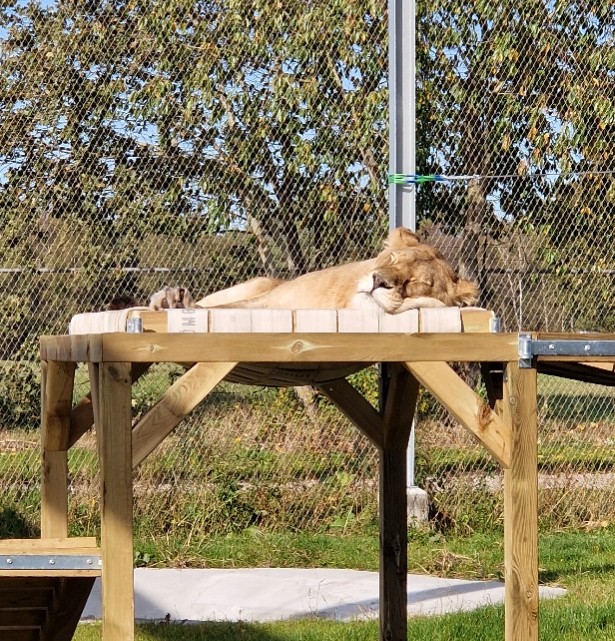Effects of the move
The move to the new enclosures led to an increase in stereotypic behaviours for Elza but a decrease for Simba. Elza’s pacing increased, potentially due to anticipation of feeding time or social stress since Manuschka was moved to the enclosure next to Elza, and they were behaviourally incompatible.
Resting decreased for both Elza and Simba, while watching decreased for Simba. This was expected, as animals housed in larger, more naturalistic enclosures typically rest less and show increased activity.
However, despite larger enclosures typically promoting activity, both Elza and Simba exhibited a decrease in play. This could be explained by them redirecting their time and energy toward other behaviours in the explorative and maintenance categories, or may also be linked to the stress of adaptation to a new environment.


Effects of the new enrichment plan
Welfare not only depends on habitat size but also on the cognitive opportunities available, suggesting that improving habitat quality through cognitive enrichment may provide greater welfare benefits than simply increasing enclosure size.
The new enrichment plan led to a decrease in tail-sucking for Simba. However, pacing increased for Elza and Manuschka, which goes against the idea that enrichment reduces stereotypic behaviours.
Investigating increased for both Elza and Manuschka, suggesting greater engagement with the new enrichment. Additionally, there was also an increase in play and moving for Manuschka.
These findings emphasise the complexity of behavioural responses to environmental and enrichment changes, highlighting the need for tailored strategies that consider both welfare priorities and individual preferences. By designing enrichment activities that align with the species’ natural behaviours and cognitive abilities, the captive environment can better promote their welfare.